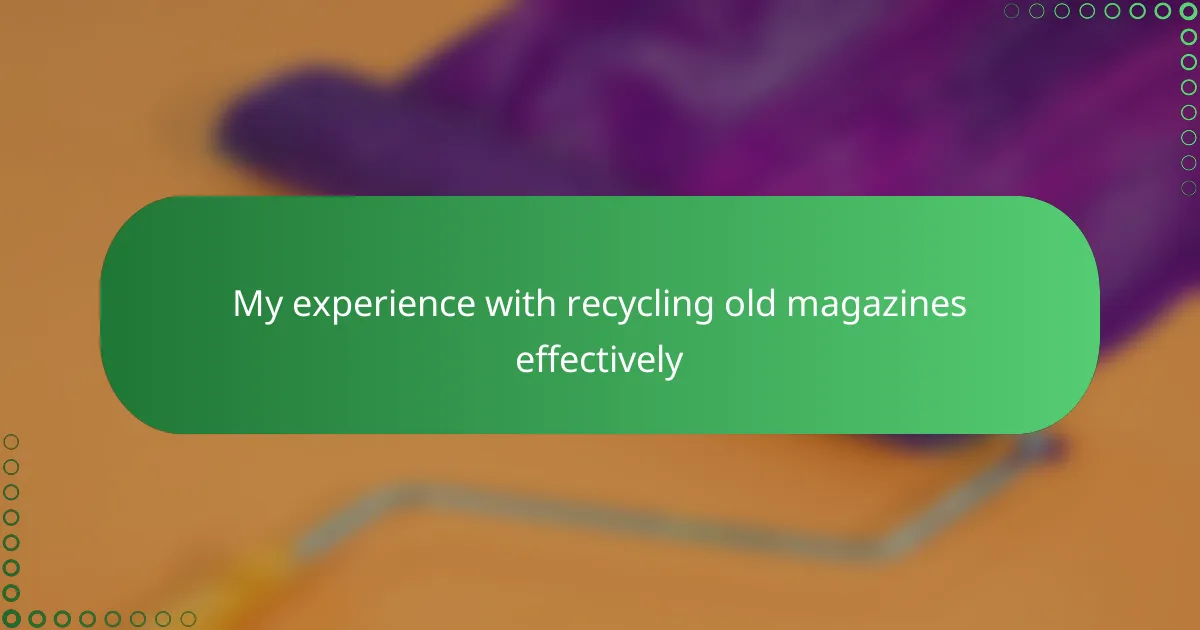Key takeaways
- Handmade paper crafts transform discarded materials into unique art, fostering creativity and sustainability.
- The recycling process connects past and present, instilling greater appreciation for the material’s journey and environmental care.
- Essential materials include colorful magazines, water, a blender, and a mesh screen for shaping new paper sheets.
- Creative projects with recycled paper, such as greeting cards and collages, offer personalization and beauty while promoting waste reduction.

Introduction to handmade paper crafts
Handmade paper crafts have always fascinated me because they transform something as simple as paper into a unique piece of art. Have you ever stopped to think about how much potential lies in a plain sheet waiting to be shaped by your hands? When I first tried it, I was amazed at how creative and relaxing the process felt.
Creating handmade paper involves more than just recycling scraps—it’s about giving new life to materials that might otherwise be discarded. I remember the satisfaction of watching old magazines turn into thick, textured sheets that could be used for cards or decorations. It felt like I was not only crafting, but also contributing to a more sustainable lifestyle.
What makes handmade paper crafts truly special, to me, is their personal touch. Each sheet carries the story of its origin and the hands that molded it. This connection makes every project more meaningful and reminds me why I keep coming back to this craft.
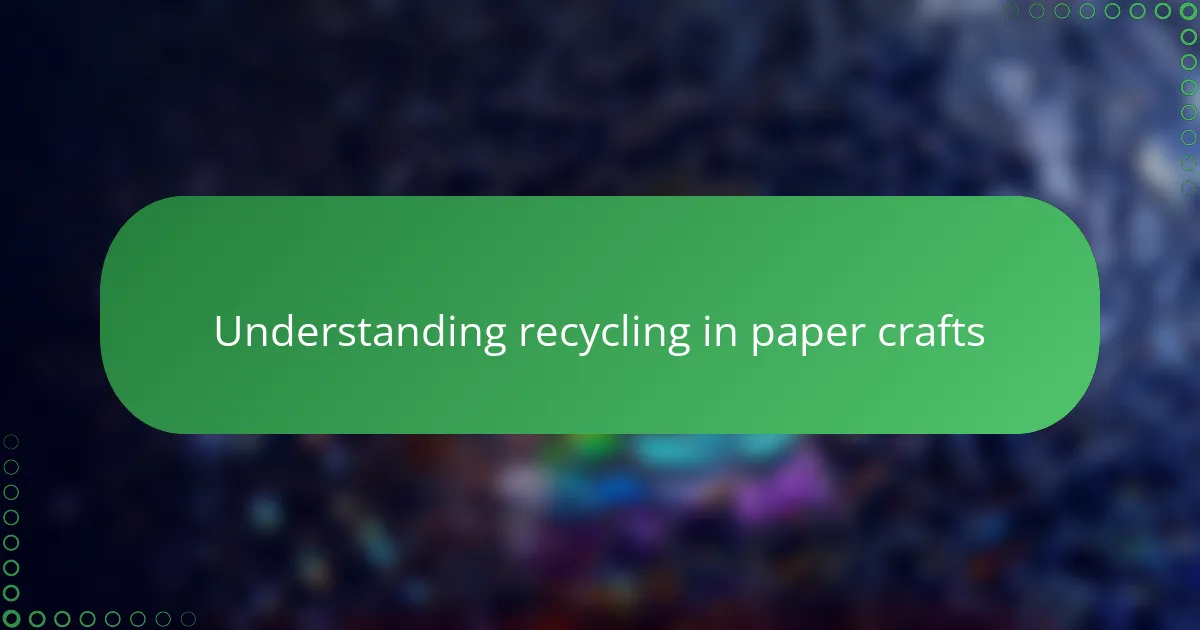
Understanding recycling in paper crafts
Recycling in paper crafts isn’t just about reusing paper; it’s about understanding the material’s journey and its potential for transformation. When I first started working with old magazines, I was surprised to see how they could be turned from glossy pages into a fibrous pulp that feels completely new under my fingers. Have you ever wondered what happens when those vibrant pages meet water and a little creativity?
What strikes me the most is how recycling connects the past and present. Every shredded magazine page carries stories, images, and memories that quietly fade as you break them down, only to reemerge in a fresh form. It’s a bit like breathing new life into something forgotten, which brings a unique satisfaction I didn’t expect when I began.
Understanding the recycling process has deepened my appreciation for the craft itself. It’s not just about throwing scraps into a pile—it’s a mindful act of caring for our environment and preserving resources. Each step, from soaking to pressing, feels like a small, powerful gesture toward sustainability, which makes my handmade creations feel even more special.
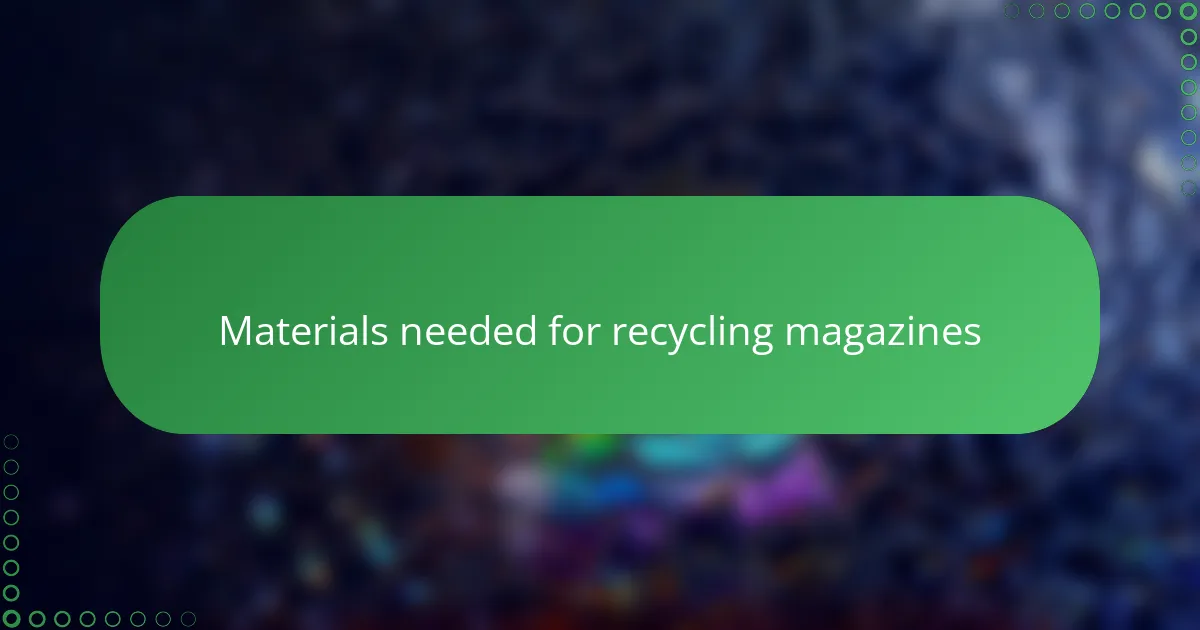
Materials needed for recycling magazines
Gathering the right materials is where the magic begins in recycling old magazines. I usually start with a stack of colorful magazines, but I also make sure to have a large basin of water ready—soaking the pages is crucial for breaking them down. Have you ever noticed how glossy pages seem tough, yet with a little soaking, they soften and become surprisingly pliable?
I keep some basic tools close by: a blender to turn the soaked pages into pulp, a framed mesh screen to shape the new sheets, and absorbent cloths for pressing out excess water. Honestly, the first time I assembled these materials, I was unsure if it would work, but seeing the pulp form right before my eyes was incredibly rewarding.
It’s funny how simple household items become essential for this craft. I’ve even used old towels and kitchen sponges to help dry the sheets, which adds a bit of charm and resourcefulness to the process. Have you ever tried turning what seems like clutter into something useful? That’s what makes this experience so fulfilling for me.
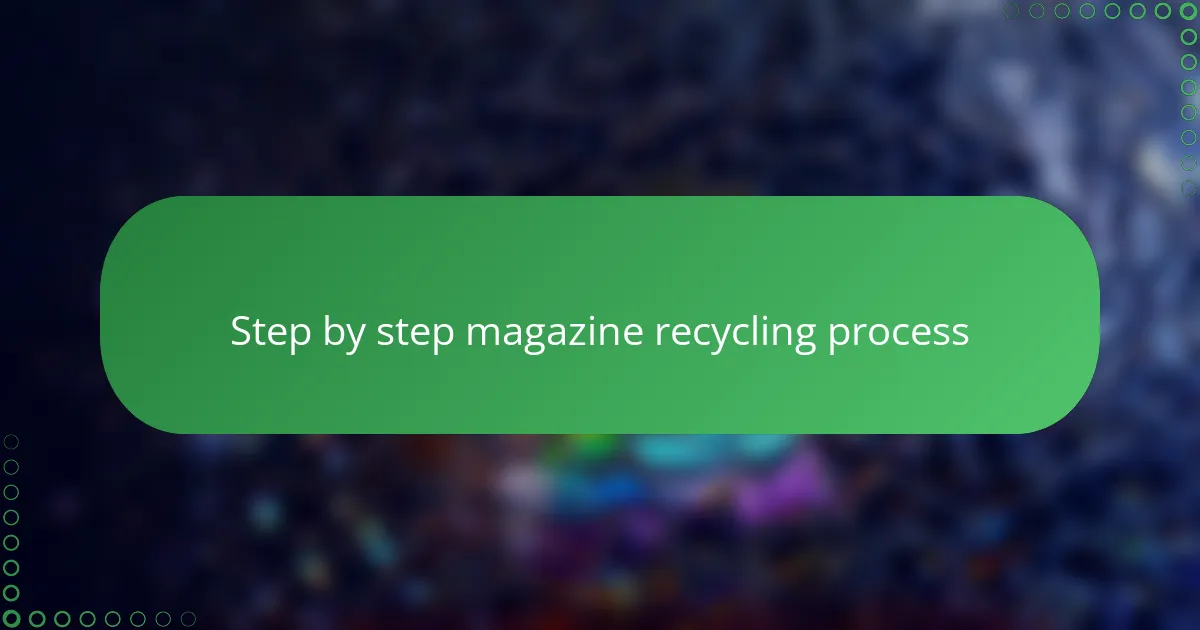
Step by step magazine recycling process
The first step in recycling magazines for handmade paper is tearing the pages into small pieces and soaking them in water. This soaking softens the glossy pages, which I found tricky at first, but it’s essential for breaking down the fibers. Have you ever noticed how those once-stiff pages suddenly become mushy and ready to transform after soaking?
Next, I blend the soaked paper until it turns into a smooth pulp. Using a blender felt a bit like magic the first time—I couldn’t believe how those colorful bits vanished into a creamy mixture. It’s a messy process, but seeing the pulp form made me realize how much potential was hidden in each magazine.
Finally, I pour the pulp onto a mesh screen and press out the water to form a new sheet. This step, though simple, feels incredibly satisfying because you can already imagine the fresh piece taking shape. Have you ever pressed pulp and felt that quiet thrill, knowing you’ve created something completely unique from something old?
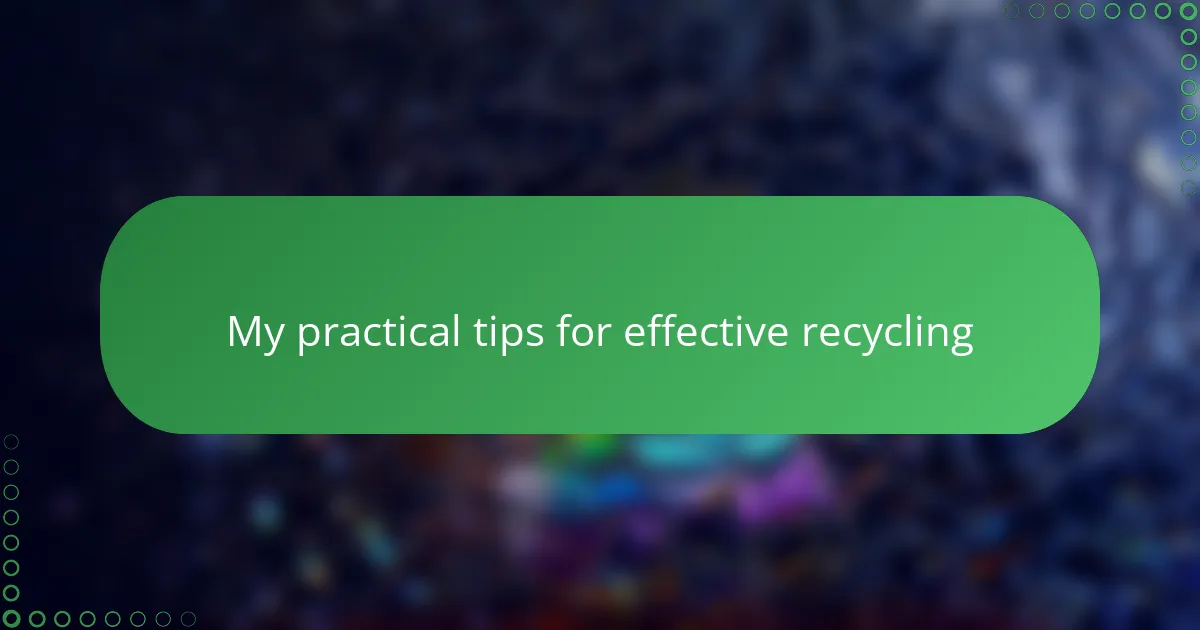
My practical tips for effective recycling
One tip I’ve found invaluable is to separate glossy pages from thicker inserts before soaking. I learned this the hard way when a particularly shiny page resisted breaking down, making my pulp lumpy. Have you ever faced that stubborn patch in your pulp? Trust me, a little patience and prep here go a long way.
I also discovered that soaking the torn pages overnight yields a much smoother pulp. It’s a small step that transforms the texture dramatically, making the blending process less frustrating. I always tell myself, good things take time—sometimes, it’s about letting the paper rest so it can reveal its best qualities.
Lastly, don’t skimp on pressing out excess water before drying the sheets. Early on, I rushed this part and ended up with fragile, uneven paper. Using a thick towel and applying steady pressure has helped me create stronger, more consistent sheets every time. Have you noticed how pressing can make or break the final look? It’s a simple trick that truly elevates your handmade paper craft.
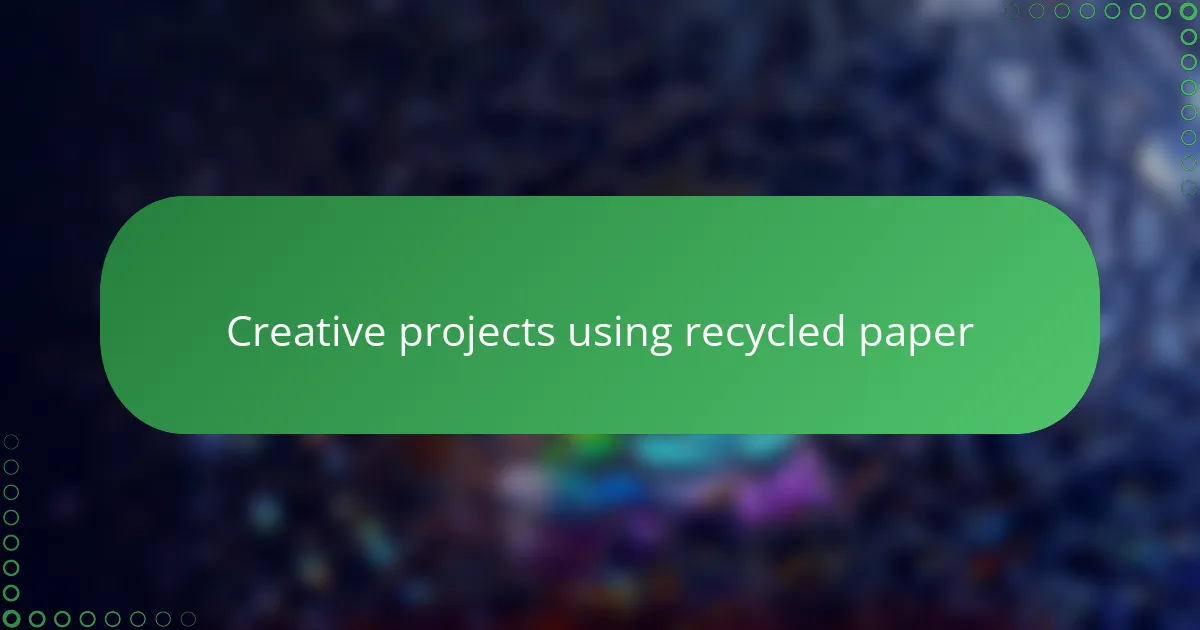
Creative projects using recycled paper
Creative projects using recycled paper open up a world of possibilities I never imagined before diving into handmade crafts. For instance, I transformed some of my thick, textured sheets into beautiful greeting cards that friends genuinely appreciated—not just for their look but for the story behind the paper. Have you ever received something handmade and felt the warmth it carries? That’s exactly the kind of personal touch recycled paper brings.
I also found myself experimenting with paper beads made from old magazine strips. Rolling those colorful bits into tiny beads and stringing them together gave me a whole new way to appreciate the vibrant images that had once seemed destined for the trash. It’s amazing how something that started as a glossy page ends up as a unique piece of jewelry or decoration.
Sometimes, I even combine my recycled paper sheets with pressed flowers or leaves to create textured collages. The tactile contrast between the fibrous paper and natural elements felt like a dialogue between nature and craft. Have you ever wondered how old magazines can reconnect us to the world outside through art? These creative projects have certainly deepened my love for both recycling and handmade expression.
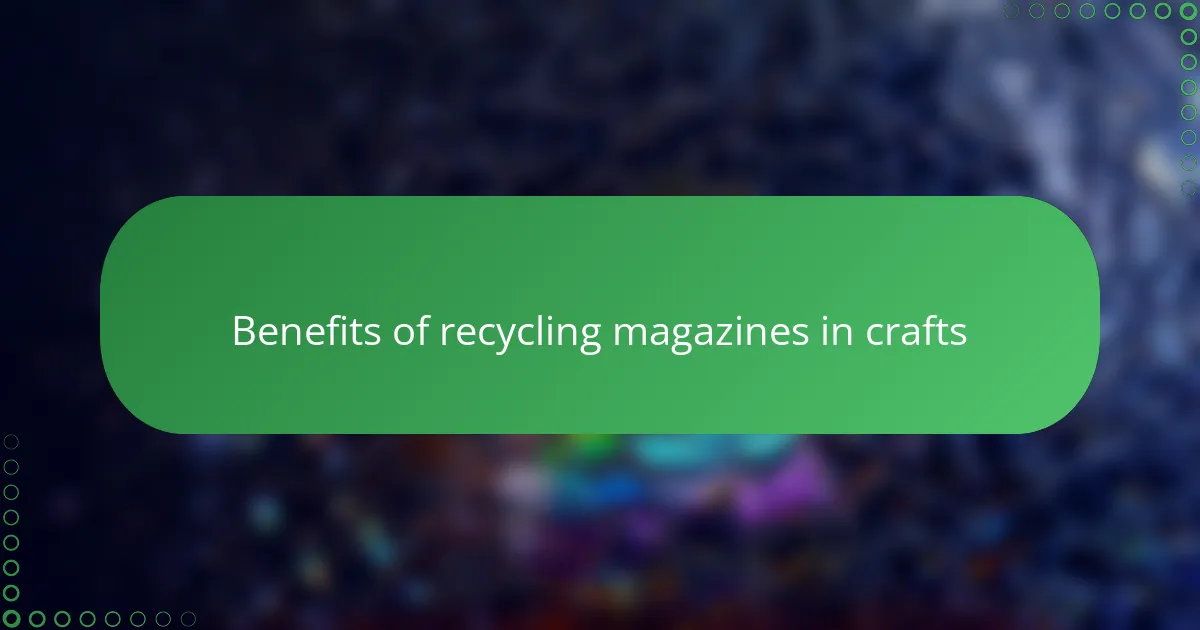
Benefits of recycling magazines in crafts
What I truly appreciate about recycling old magazines in crafts is how it turns waste into something wonderfully tangible and beautiful. Each page, once overlooked, gains a new purpose in my projects, reminding me that creativity and sustainability can go hand in hand. Have you ever felt the thrill of seeing glossy prints morph into textured sheets that hold stories beyond words?
Recycling magazines also offers a versatile palette of colors and patterns that I find hard to match elsewhere. Those vivid images and fonts become part of the paper’s character, adding uniqueness that plain recycled paper just can’t replicate. It makes crafting feel like a personal journey, where every piece carries an unexpected charm and history.
Beyond aesthetics, using recycled magazines for handmade paper has become a small but meaningful way for me to reduce waste. Knowing that my crafting choices can lessen environmental impact gives my work a deeper sense of purpose. Have you noticed how making something by hand from recycled materials connects you more closely to both the craft and the world around you?
